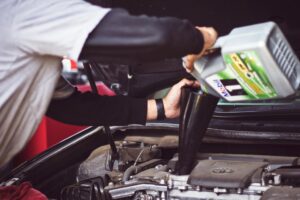Are you interested in buying your first firearm? If you are, you are not alone. In fact, since the start of the coronavirus pandemic, gun sales have hit new records, and that is thanks in large part due to new gun owners.
In today’s dangerous world, you can never be too careful. So whether you are getting a gun for self-defense, hunting, or target practice, there are some things that you need to first understand.
When you take your gun out, you need to follow your firearm essentials checklist. This checklist is going to help you make sure that you are always prepared and staying safe.
So what is on this handy checklist? Keep on reading and we’ll show you exactly what you need to know!
Ammunition
A gun is useless without high-quality ammunition. In order to break in your new gun, it is a good idea to use a variety of bullet types. This includes hollow-point types and popular ball ammo.
This is going to make sure that your defensive weapon is going to feed reliably whenever you need it to. As a new gun owner, it is important that you schedule in regular training sessions with your gun and ammo.
You should test new ammunition and understand which bullets work best in different environments and seasons. You should practice every few weeks or months.
The rounds that use for hunting animals will differ from the ammo that you use for defense. And the rounds that you use for hunting four-legged animals will differ from the ammo that you use to shoot animals with only two legs.
You should also keep in mind that you can never have too much ammunition. Instead of buying individual packs of ammo at different times, it is a better idea to stock up and buy in bulk.
This will help you learn which ammo works best within seven yards and which begins to lose accuracy after thirty yards. And don’t forget to store your ammo in airtight containers.
Flashlight
When you take your gun out, you should bring a mounted or handheld flashlight. It can be difficult to see in the woods and at night. When you are shooting at a target, you want to make sure that your vision is at its best.
People who carry a gun but not a light always assume they will be shooting in optimal circumstances, which is not always the case. It’s not possible to know what the conditions will be like.
Carrying a light with you will help you always be prepared.
Holster
If you are going to be carrying a gun around for concealed carry, then it is very important that you buy a high-quality gun holster. Think about how much retention you need and what is considered overkill.
To put it another way, don’t buy a holster with a thumb strap if it’s going to be carried concealed. The first rule of gun retention is concealment. Think about your physical build and how you move your body.
An appendix holster might be perfect for someone who has fast reflexes and a fit body. However, someone who is out of shape and has a limited range of motion should consider something else.
You want a holster that is going to be effective, safe, and comfortable.
Maintenance Kit
It is vital that you maintain your firearms. You should clean your gun after each use. While you don’t need to be giving a full cleaning after each shooting session, you at least want to make sure that it is clean and lubricated.
Make sure that you protect against rust that forms from contact with body sweat. You also need to be on the lookout for lint and fuzz.
Your maintenance kit should include a multi-use cleaner, lubricant, patches, a cleaning jag, and a bore brush. You also want to bring a disassembly tool if you are expecting bad weather.
Other items that can help include replacement parts and weapon lights.
Sights
A lot of stock pistol sights are made out of cheap plastic. These sights are not durable and damage easily. You should think about getting high-quality sights that hold their zero.
Night sights tend to be sturdy and help with target recognition. They are good for shooting in low-light. However, these sights come with expiration dates and get dimmer as time goes on.
Trauma Kit
If you find yourself around anti gunners, they will likely cower when they see you take out your gun. You can help to keep their minds at ease though by showing them your trauma kit.
Accidents can happen with guns. And you should be ready to respond if something goes awry. These kits should include pressure bandages, hemostatic gauze, and a pair of scissors.
Of course, you should always practice proper gun safety and make sure that your safety is engaged until you plan to fire.
The Importance of Using This Complete and Only Firearm Essentials Checklist You’ll Ever Need
Hopefully, after reading the above firearm essentials checklist, you now have a better idea of what to take with you the next time you go shooting. As we can see, you need to put a lot of thought into what you are taking with you when you take your gun out. But doing so will make sure that your shooting experience goes smoothly.
Check out the rest of our site for more helpful articles today!









